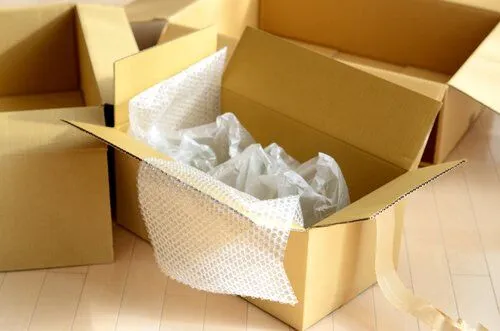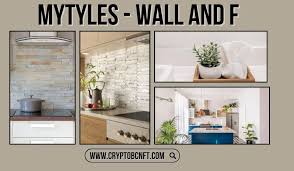Protective Packaging: Solutions, Benefits, and Innovations
Introduction
Protective packaging plays a crucial role in safeguarding products throughout their lifecycle, from production to end-user delivery. This type of packaging is designed not only to protect items from physical damage but also to ensure they reach their destination in optimal condition. At the heart of protective packaging are various materials and technologies tailored to meet diverse needs. This article delves into the key types of protective packaging, focusing on polystyrene, polyethylene foam, and other advanced materials, offering insights into their benefits, applications, and innovations.
Understanding Protective Packaging
What is Protective Packaging?
Protective packaging refers to materials and systems used to shield products from damage during transportation, storage, and handling. It encompasses a wide range of solutions designed to cushion, insulate, and stabilize products to prevent breakage, deformation, or degradation. This type of packaging is essential for maintaining product integrity, ensuring customer satisfaction, and reducing waste and returns.
Types of Protective Packaging
Protective packaging comes in various forms, each suited to different applications and requirements. The most common types include:
- Polystyrene Packaging: Known for its lightweight and versatile nature, polystyrene packaging is often used for high-volume items that require basic protection. It is non-toxic, chemically inert, and provides excellent thermal insulation.
- Polyethylene Foam Protective Packaging: This type of foam is ideal for products requiring more robust protection. It offers superior cushioning, absorbs impact forces, and is resistant to moisture and temperature fluctuations.
- Polyurethane Packaging: Suitable for lighter products or multiple item containment, polyurethane provides effective cushioning and is often used in applications where additional protection is needed.
- Plastazote and Zotefoam: These specialized foams offer a range of densities and colors, combining cushioning properties with aesthetic appeal.
Benefits of Protective Packaging
Enhanced Product Protection
The primary benefit of protective packaging is its ability to shield products from physical damage. By using materials like polystyrene and polyethylene foam, businesses can minimize the risk of impacts, vibrations, and shocks that could compromise the product’s condition. This protection is crucial for delicate items such as electronics, glassware, and pharmaceuticals.
Cost-Effectiveness
Protective packaging solutions are designed to be cost-effective by reducing the likelihood of product damage and associated costs. Materials like polystyrene are not only affordable but also lightweight, which helps lower shipping costs. Furthermore, by investing in high-quality protective packaging, businesses can reduce return rates and customer complaints, ultimately saving money.
Versatility and Customization
One of the key advantages of protective packaging is its versatility. Solutions can be customized to fit specific product shapes and sizes, ensuring a perfect fit and optimal protection. Custom packaging also allows businesses to integrate branding elements, enhancing the overall customer experience.
Environmental Impact
With increasing awareness of environmental issues, many businesses are turning to eco-friendly protective packaging solutions. Materials such as recycled polyethylene foam and biodegradable options help reduce the environmental footprint of packaging. By choosing sustainable materials, companies can improve their brand image and appeal to environmentally conscious consumers.
Advanced Protective Packaging Solutions
Polystyrene Packaging
Polystyrene packaging is a popular choice for many industries due to its cost-effectiveness and ease of use. It is often used in high-volume applications where basic protection is sufficient. Key features of polystyrene packaging include:
- Least Expensive: Polystyrene is one of the most affordable packaging materials, making it a budget-friendly option for many businesses.
- No Tooling Required: Production can be started quickly without the need for expensive tooling, allowing for rapid turnaround times.
- Lightweight: Polystyrene is incredibly light, which helps reduce shipping costs and simplifies handling.
- Versatile: It can be easily cut, shaped, and fabricated to meet specific packaging needs.
Polyethylene Foam Protective Packaging
Polyethylene foam is known for its superior cushioning and durability. It is used in applications requiring high levels of protection and is available in various colors and densities. Benefits of polyethylene foam packaging include:
- Impact Absorption: The foam’s cellular structure acts as a shock absorber, reducing the risk of damage during transit.
- Moisture and Chemical Resistance: Polyethylene foam resists moisture, chemicals, and temperature fluctuations, making it suitable for sensitive products.
- Reusable: Ideal for multi-trip packaging, polyethylene foam offers long-term reliability and performance.
Polyurethane Packaging
Polyurethane is another effective protective packaging material, particularly for lighter products. Its benefits include:
- Effective Cushioning: Provides excellent cushioning for items that require protection from impacts and vibrations.
- Lightweight: Like polystyrene, polyurethane is lightweight, which helps in cost savings for shipping.
Plastazote and Zotefoam
Plastazote and Zotefoam are specialized foams used in applications where aesthetics and functionality are equally important. They offer:
- Varied Densities: Available in different densities to suit various protection needs.
- Custom Colors: Can be produced in a range of colors, adding a visual appeal to the packaging.
Conclusion
Protective packaging is an essential component in safeguarding products and ensuring they arrive at their destination in excellent condition. Whether using polystyrene, polyethylene foam, or other advanced materials, the choice of packaging can significantly impact product protection, cost-effectiveness, and environmental sustainability. By investing in the right protective packaging solutions, businesses can enhance their product’s safety, reduce costs, and improve their overall brand image. As the industry continues to evolve, innovative solutions will further drive the effectiveness and efficiency of protective packaging.
For more information on protective packaging solutions tailored to your needs, consider reaching out to experts in the field who can provide custom designs and comprehensive support to ensure your products are well-protected throughout their journey.











Post Comment